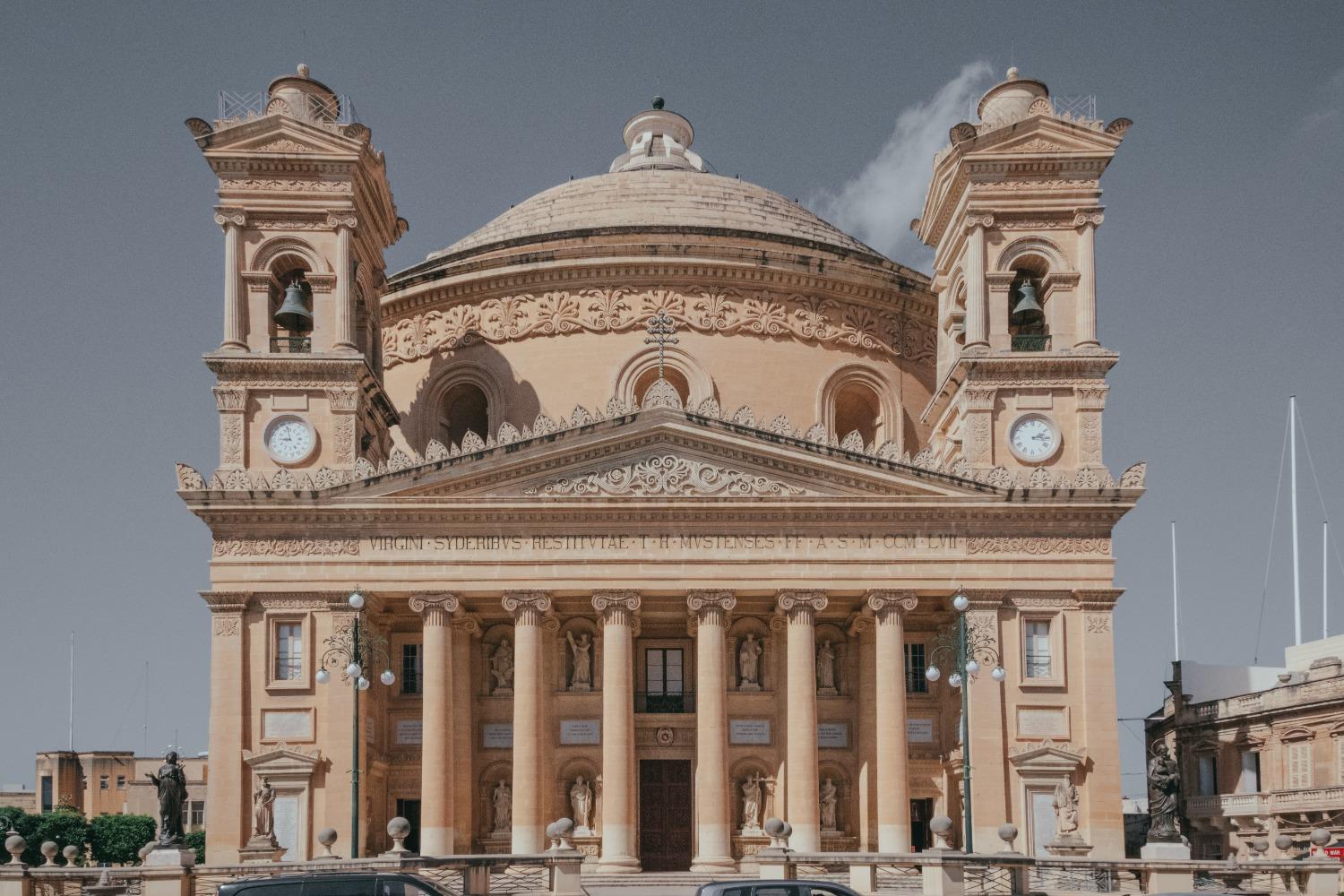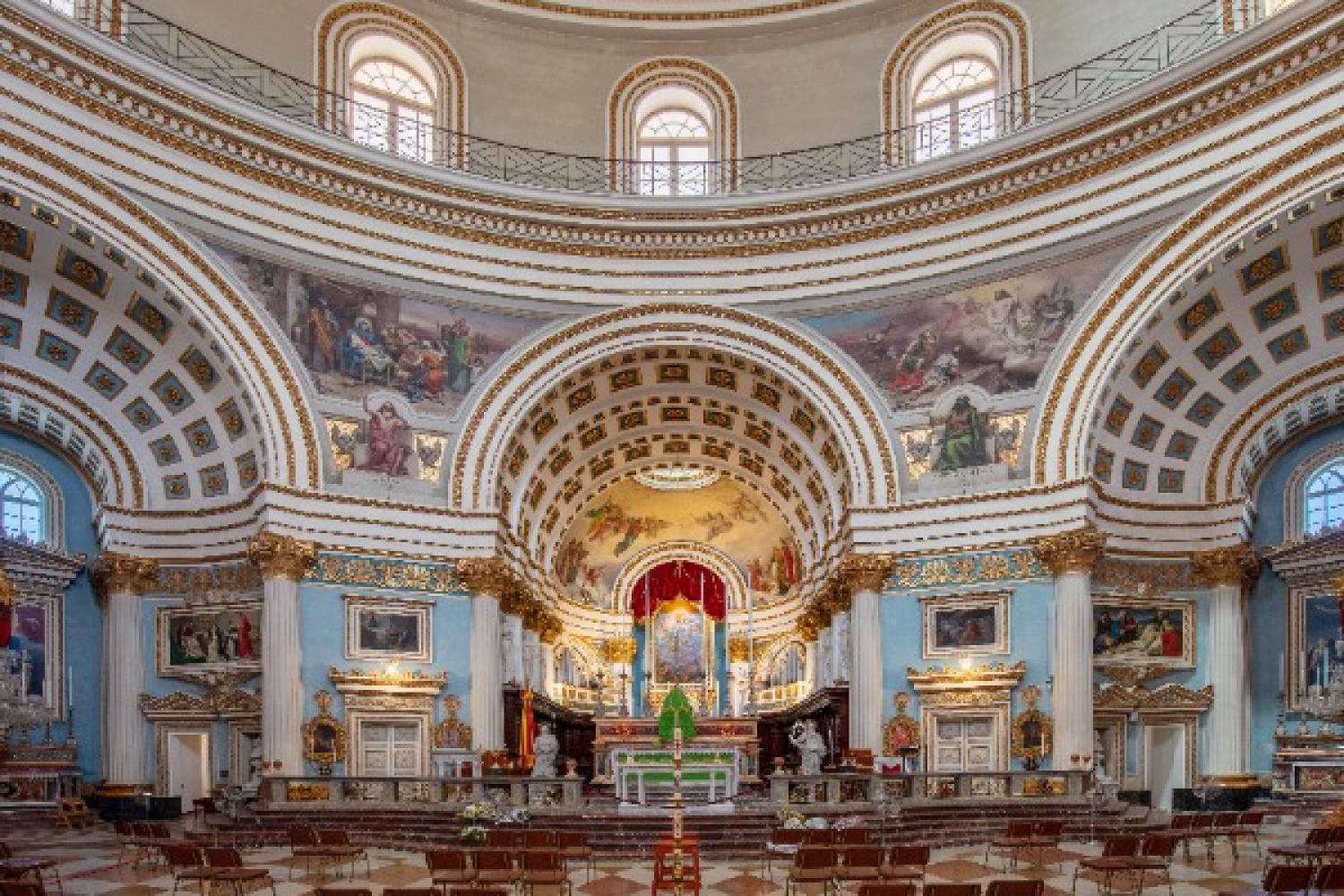
The Rotunda of Mosta – officially, the Sanctuary Basilica of the Assumption of Our Lady – is one of the most beloved structures in Malta.
The city of Mosta is located relatively inland – as far “inland” as one can be on the small island of Malta – sitting between the beach where St. Paul washed ashore in the final chapter of Acts and the ancient fortress of Mdina. A church was built on the site of the modern basilica in the first years of the seventeenth century, serving the inhabitants of the scattered agricultural settlements in the region. As the population of Malta grew and Mosta became established as a center of economic activity on the island-nation, a new church was required.
In the 1830s, a Maltese scholar named Giorgio Grognet de Vassé proposed a massive rotunda be built, modeled on Rome’s Pantheon. Grognet's proposal to model the church on a famous Roman temple faced opposition on the reasoning that the pagan Pantheon was an inappropriate model for a church. Nevertheless, his design was eventually approved, and building began.
Because the new church would occupy the same site as the old church, the new church was built around it. This allowed the old church to be utilized throughout the nearly three-decade construction process. When the new church was completed, the old church was simply demolished and removed. The massive structure’s unsupported dome spans a diameter of nearly 130 feet, making it one of the largest unsupported domes in the world. Despite the church’s impressive architecture – which includes two bell towers and a façade dominated by large pillars – its construction was a humble, local affair. Grognet himself lacked formal architectural training and thus frequent consultations were required. Much of the construction work was undertaken by volunteers, who dedicated time on Sundays and other holidays.
While the church was dedicated in 1871 and was elevated to a minor basilica in 2018, perhaps the most important year in its history was 1942. On a Thursday evening in April, sirens rang out, warning of an impending bombing from the German Luftwaffe. While many who had been attending evening Mass rushed to their homes, some stayed in the church to pray. Bombs from the German Luftwaffe soon rained down over Mosta, and while two bombs deflected off the dome, one penetrated it, crashing into the church below. The bombs never detonated. Allied military forces stationed nearby rushed to diffuse and dispose of the bombs, and the people of Mosta knew: providence had saved their church and many their lives.
Photo Attribution A: "Rotunda of Mosta, Malta, Main Altar" by Diego Delso is licensed under CC BY-SA 4.0.

The First Draught
To receive the Weekly Update in your inbox every week, along with our weekly Lectio Brevis providing insights into upcoming Mass readings, subscribe to The First Draught.
